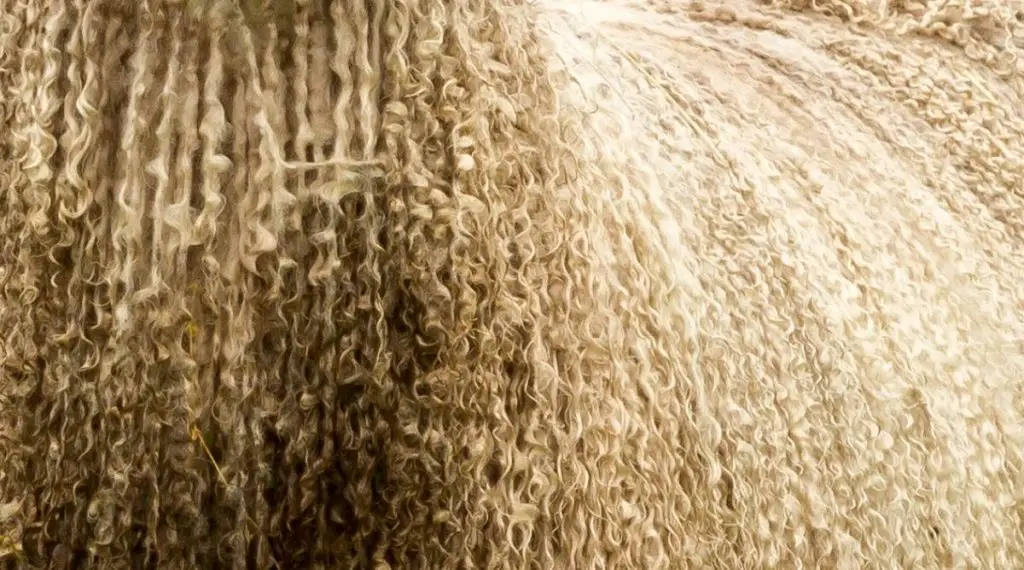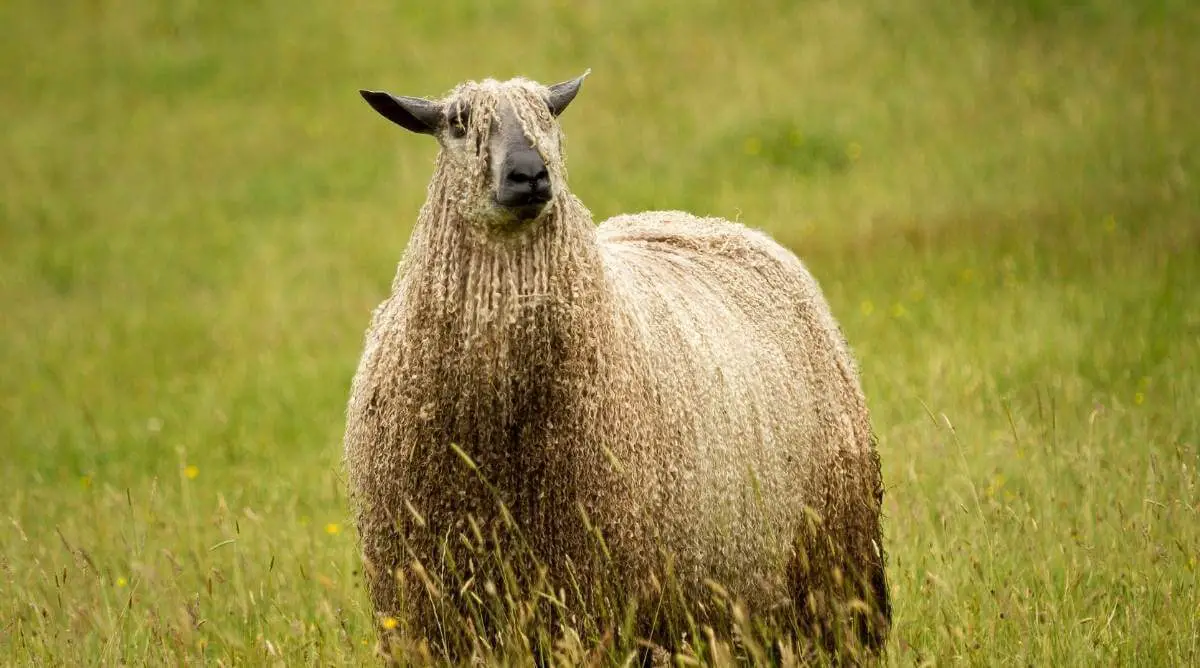Wensleydale sheep are a large breed with an almost llama-like appearance. Their blueish head, ears, and legs create a distinctive look together with their long, curly wool. Wensleydale sheep have a reputation for a high quantity and quality of wool. They are listed as an endangered species by the Rare Breeds Survival Trust.
Table of Contents
Wensleydale Sheep Origin
The Wensleydale sheep is a British domestic breed of sheep. It is named after Wensleydale, in North Yorkshire, the area in which it was bred during the early nineteenth century.
The Wensleydale breed was developed through crossbreeding between the Dishley Leicester and a now extinct, local longwool breed.
Wensleydale Sheep Characteristics
| Characteristics | Description |
| Origin | England |
| Appearance | Large-bodied, longwool sheep. Blueish head, ears, and legs. Both rams and ewes are polled (hornless). The long tuft of wool on the top of the head (the “topping”) is normally not shorn. |
| Wool | Wensleydale sheep produce high-quality wool. Staple lengths are 0-12 inches. Fiber fineness is 33-34 microns. Wensleydale wool has unique characteristics that ensure the fleeces are kemp free. |
| Weight | 278 pounds (Rams). 200 pounds (Ewes). |
| Meat | Primarily a wool sheep, but some meat use. |
| Environment | Thrives in environments similar to its native climate in the United Kingdom. Adaptable to hot and cold climates. |
| Common uses | Wool production. Crossbreeding to improve wool quality. Knitting yarn, cloth, fabrics used for upholstery, and knitwear. |
| Notes | Currently listed with the Rare Breeds Survival Trust as being high risk or endangered. |
The Wensleydale is a large-bodied, longwool sheep. The breed has a distinctive blueish head, and the ears and legs are also blueish. Both rams and ewes are polled (hornless).
A distinct feature of this breed is the long tuft of wool that sits on the top of the head. This is called the “topping.” This tuft of wool is usually not shorn when the rest of the fleece is.
Wensleydale sheep are bred for wool production and meat production. They are also used in crossbreeding programs with other breeds. Wensleydale ewes are recognized for their high lambing percentage.
Listing As An Endangered Species
Similarly to what happened to the Teeswater breed, Wensleydale flock numbers began to decline as the need to use the breed as a crossing sire lessened.
Wensleydale sheep are currently listed with the Rare Breeds Survival Trust as being high risk or endangered.
Wensleydale Sheep Wool Facts

Wensleydale sheep produce vast amounts of high-quality wool. The fleece of the Wensleydale sheep is bright and shiny.
Staple lengths are 0-12 inches and fiber fineness is 33-34 microns. The follicles responsible for wool production in Wensleydales have unique characteristics that ensure the fleeces are kemp free. This kemp-free attribute means that Wensleydales can be used for crossbreeding in order to improve wool.
Wensleydale wool has many similarities to mohair, and is sometimes blended with mohair. The wool is ideal for use in knitting yarn, cloth, fabrics used for upholstery, and knitwear.
Wensleydale Sheep Meat Production
Wensleydale sheep are bred primarily for wool but are also used for mutton or meat production.
Wensleydale sheep remain lean throughout the growth process. This allows the sheep to be slaughtered as lambs or once they have reached mutton or hogget age. The lambs can reach heavier weights without gaining much fat.
Mature rams weigh on average 278 pounds. Ewes weigh 200 pounds on average.
Which Environments Are Best for Wensleydale Sheep?
Wensleydale sheep are hardy and strong. They are able to thrive with ease in areas with climates similar to their native territory, the United Kingdom.
The breed easily adapts to both hot and cold climates when necessary.
Association
The Wensleydale Longwool Sheep Breeders Association was founded in 1890.
The North American Wensleydale Sheep Association was founded by a handful of shepherds in 1999. It is a breed registry that governs the standards, pedigrees, and breed-up guidelines of the North American Wensleydale sheep.

